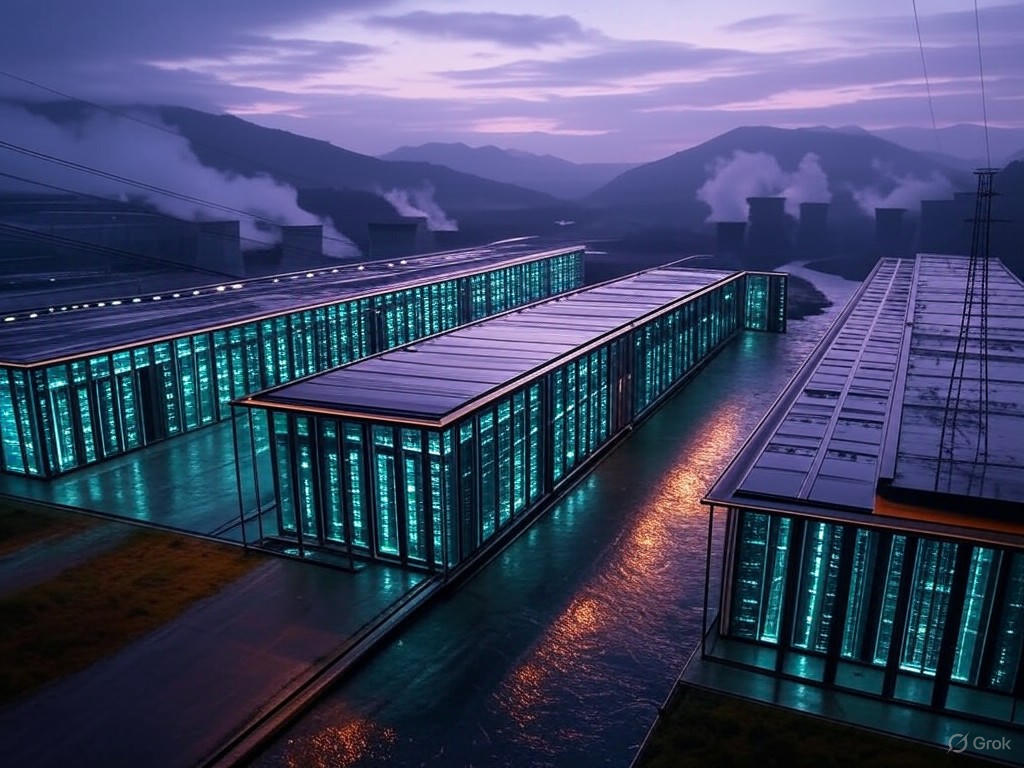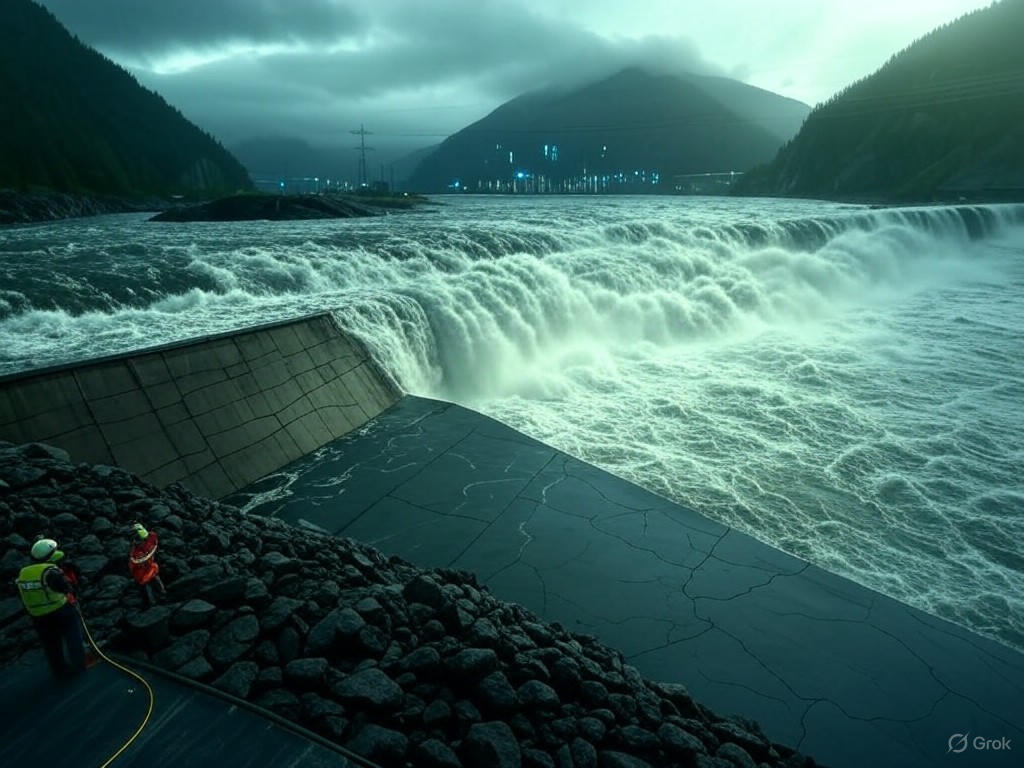AI’s Energy Hunger: Pacific Northwest’s Grid Under Strain
In the verdant expanses of the Pacific Northwest, where misty mountains feed roaring rivers and ambitious dreams of technological dominion, a quiet crisis brews. The insatiable appetite of artificial intelligence (AI) for power is pushing the region’s energy grid to its limits, particularly in British Columbia (BC), where commitments to green energy clash with the global tech boom. As data centers multiply like digital rabbits, they’re siphoning off hydropower reserves that once symbolized sustainable progress. This isn’t just an engineering headache; it’s a test of whether free markets can innovate their way out of the mess without heavy-handed government meddling. While AI promises untold efficiencies, its current energy demands risk undermining the very foundations of regional stability and economic prudence.
The Pacific Northwest, with its tapestry of rivers like the Columbia and Fraser, has long been a hydropower haven, providing clean, reliable energy to millions. Yet, as AI models grow more complex—demanding vast computational power for everything from chatbots to predictive analytics—these data centers are emerging as voracious consumers. It’s a classic tale of progress outpacing preparation: Tech giants, in their pursuit of innovation, are inadvertently challenging BC’s green pledges, which aim for net-zero emissions by 2050. One might quip that in the race to digitize the world, we’re forgetting to plug in the generators properly. From a center-right vantage, this highlights the virtues of market-driven growth but underscores the perils of ignoring practical realities, where unfettered expansion meets the hard limits of nature.
The Strain on the Grid: A Closer Look at AI’s Thirst for Power
Delve into the mechanics, and the picture grows clearer—and more concerning. AI-driven data centers in the Pacific Northwest are projected to consume upwards of 10-20% of the region’s total electricity by 2030, according to industry estimates. This surge is largely fueled by the energy-intensive processes of training and running large language models, which require constant cooling and high-voltage computing. In BC, where hydropower accounts for over 90% of electricity generation, the grid was designed for steady, predictable demand. Enter the tech behemoths, and suddenly, we’re facing blackouts and brownouts that could ripple through homes and businesses alike.
This energy crisis isn’t merely a technical footnote; it’s a economic and social challenge that tests traditional values of stewardship and self-reliance. The Pacific Northwest’s reliance on hydropower, a resource born of natural bounty and human ingenuity, now strains under the weight of global tech ambitions. Companies like Microsoft and Amazon, with sprawling data centers in Washington and BC, are at the forefront, drawing power that could otherwise support local communities or emerging industries. Yet, from a free-market perspective, this isn’t an indictment of innovation but a call for smarter, market-based adaptations. Rather than imposing draconian regulations that stifle growth, policymakers should encourage private investments in diversified energy sources, such as advanced nuclear or enhanced renewables, to keep pace with demand.
Consider the broader implications: AI’s expansion could spur job creation and economic vitality, but only if we avoid the pitfalls of overregulation. The Wall Street Journal recently highlighted how tech firms are negotiating long-term power contracts with utilities, a pragmatic approach that fosters competition rather than reliance on subsidies. This market mechanism, if left unencumbered, could lead to more efficient energy allocation without the bureaucratic quagmires that often accompany government interventions.

This image captures the glowing facade of a massive AI data center in the Pacific Northwest, symbolizing the relentless 24/7 operation that drives technological progress but strains local energy resources.
Evidence of the Imbalance: Data, Trends, and Real-World Impacts
The evidence mounts steadily. Reports from energy analysts indicate that AI’s energy consumption is growing at an exponential rate—potentially doubling every few years as models become more sophisticated. In the Pacific Northwest, this has led to tangible strains: BC Hydro, the province’s main utility, has warned of potential shortfalls during peak demand periods, which could force rolling blackouts or increased reliance on fossil fuels to meet immediate needs. Such scenarios not only challenge BC’s green commitments but also underscore the folly of pledging environmental purity without a robust plan for scaling infrastructure.
Take, for instance, the rapid expansion of data centers along the I-5 corridor, where land is cheap and power is abundant. A study by IEEE Spectrum reveals that a single large AI training run can consume as much electricity as a small town, exacerbating grid pressures in areas already grappling with climate variability. Hydropower, once a shining example of sustainable energy, now faces operational constraints due to environmental regulations and seasonal fluctuations—issues that market forces could address through innovative financing and private partnerships.
Moreover, global tech growth amplifies these local woes. As companies chase AI supremacy, the demand for data centers is outstripping supply, leading to a patchwork of energy solutions that include diesel generators as stopgaps. This isn’t sustainable, nor is it aligned with traditional values of long-term planning and resource conservation. Cato Institute argues persuasively that deregulating energy markets would allow for faster deployment of alternative sources, like modular nuclear reactors, without the delays of government oversight. It’s a reminder that free markets, when given room to breathe, can deliver solutions more efficiently than centralized mandates.

This photograph depicts a bustling hydropower dam in the Pacific Northwest, its turbines whirring amidst rising water levels, illustrating the delicate balance between renewable energy sources and the escalating demands of AI technology.
Toward a Market-Led Resolution: Balancing Innovation and Stability
In conclusion, the AI energy crisis in the Pacific Northwest isn’t a harbinger of doom but a pivotal moment for recalibrating our approach. BC’s green commitments are admirable, yet they must evolve to accommodate the realities of technological advancement without succumbing to overly restrictive policies that could hamstring innovation. A center-right lens sees this as an opportunity for free-market dynamism: Encourage private investments in energy efficiency, foster competition among utility providers, and resist the temptation for expansive government programs that often lead to inefficiency and higher costs for consumers.
Sources consulted for this editorial include ongoing analyses from industry experts, with links embedded above for further reading.

